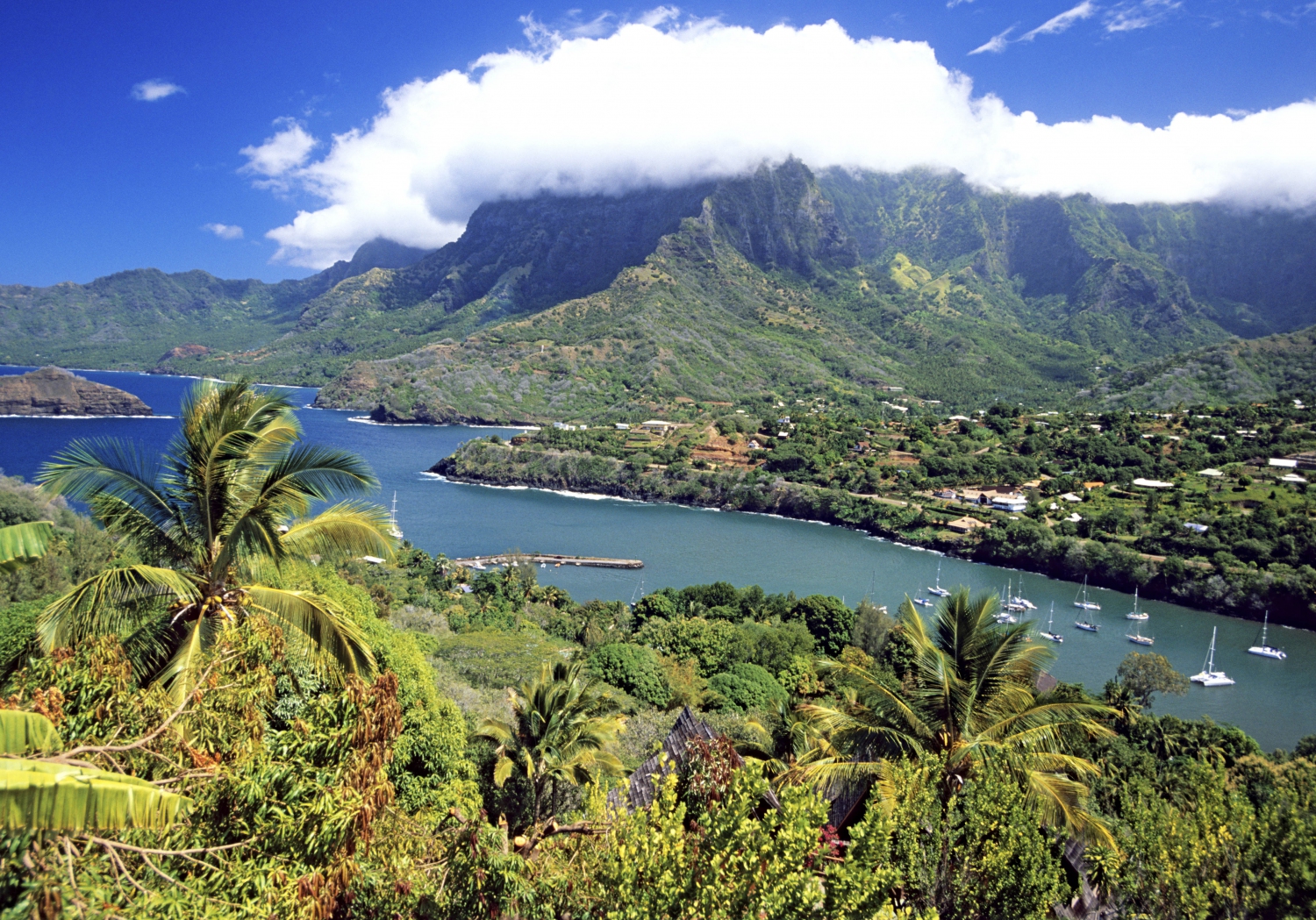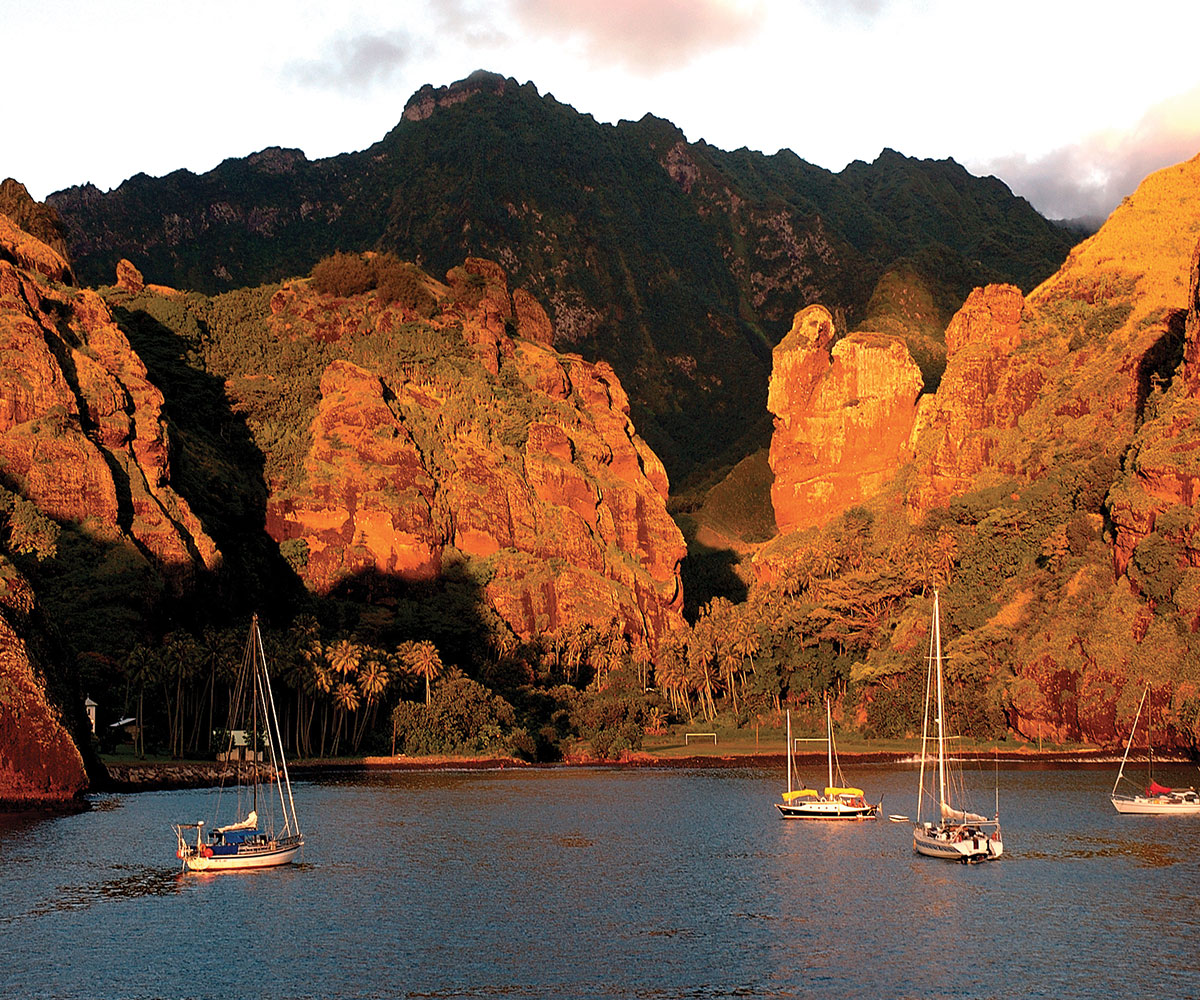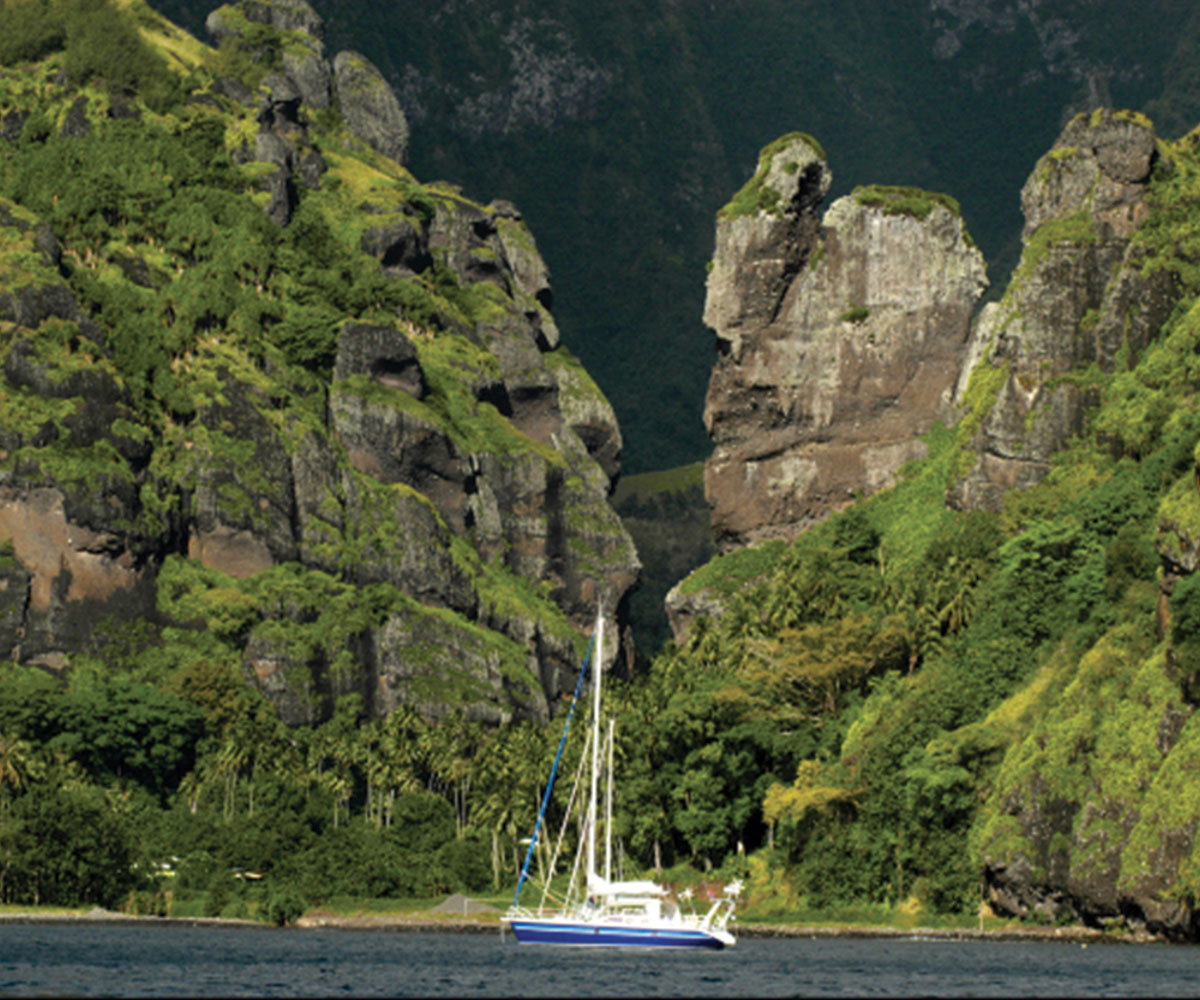Embark on a captivating journey to Fatu Hiva Island, a Polynesian paradise that seamlessly blends rich history, breathtaking landscapes, and vibrant cultural traditions. From its ancient petroglyphs to its diverse flora and fauna, Fatu Hiva Island beckons travelers to immerse themselves in its enchanting embrace.
This enigmatic island, nestled in the Marquesas archipelago, has captivated explorers and visitors alike for centuries. Its rugged terrain, dotted with towering mountains and verdant valleys, provides a stunning backdrop for a plethora of outdoor adventures. Discover hidden coves, snorkel amidst vibrant coral reefs, and embark on invigorating hikes that unveil the island’s natural wonders.
Fatu Hiva Island’s History and Culture
Fatu Hiva Island, part of the Marquesas Islands in French Polynesia, holds significant historical and cultural value. Its history dates back to the Polynesian migrations around 1000 CE, when the first settlers arrived and established a thriving society.
The island’s unique cultural traditions and practices have been preserved over centuries, including intricate body art, traditional dances, and a strong connection to the natural environment. Fatu Hiva is also renowned for its ancient petroglyphs and archaeological sites, offering glimpses into the island’s rich past.
Polynesian Heritage
Fatu Hiva Island’s Polynesian heritage is evident in its language, customs, and artistic expressions. The inhabitants speak the Marquesan language, a branch of the Eastern Polynesian language family, and maintain a strong oral tradition of storytelling and chanting.
Traditional dances, such as the ‘haka’, showcase the island’s cultural identity and are often performed during festivals and celebrations. These dances are characterized by rhythmic chanting, powerful movements, and elaborate costumes made from natural materials.
Petroglyphs and Archaeological Sites
Fatu Hiva Island is home to numerous petroglyphs and archaeological sites that provide insights into the island’s ancient history and culture. These petroglyphs, carved into rocks and cliffs, depict a variety of motifs, including human figures, animals, and geometric patterns.
Archaeological excavations have uncovered ancient settlements, burial grounds, and ceremonial structures, indicating a rich and complex society that flourished on the island centuries ago.
Fatu Hiva Island’s Geography and Landscape
Fatu Hiva Island, a remote paradise in the Marquesas archipelago, boasts a captivating topography and a unique ecosystem. Its rugged mountains, lush valleys, and pristine coastline create a breathtaking natural tapestry that allures visitors and nature enthusiasts alike.
Topography
Fatu Hiva Island is characterized by its dramatic topography. The island’s mountainous spine, known as the Temetiu Mountains, rises majestically, with peaks reaching over 1,000 meters (3,280 feet) above sea level. The highest point on the island is Mount Oave, which stands at 1,125 meters (3,690 feet) and offers panoramic views of the island’s rugged beauty.
The mountains of Fatu Hiva Island are deeply dissected by steep-sided valleys, creating a labyrinthine network of waterways and waterfalls. These valleys, known as “hivas,” provide fertile grounds for agriculture and are home to diverse plant and animal life.
Coastline
The coastline of Fatu Hiva Island is equally captivating. The island is fringed by a series of dramatic cliffs and sea stacks, which give way to secluded bays and pristine beaches. The coastline is dotted with numerous small coves and inlets, providing safe havens for boats and kayakers.
Do not overlook explore the latest data about ocean city christmas lights.
The waters surrounding Fatu Hiva Island are crystal clear and teeming with marine life. The island is a popular destination for snorkeling and scuba diving, offering encounters with a wide variety of tropical fish, sea turtles, and dolphins.
Enhance your insight with the methods and methods of emilia romagna pizza.
Flora and Fauna
Fatu Hiva Island is home to a rich and diverse ecosystem. The island’s flora includes over 200 species of plants, many of which are endemic to the island. These include the rare and endangered Fatu Hiva tree fern, which is found only in the high-altitude forests of the island.
The island’s fauna is equally diverse. Fatu Hiva Island is home to a variety of bird species, including the Marquesan kingfisher, the Marquesan fruit dove, and the Marquesan flycatcher. The island is also home to a number of reptiles and amphibians, including the Fatu Hiva gecko and the Fatu Hiva frog.
| Feature | Description |
|---|---|
| Mountains | Rugged Temetiu Mountains, peaks over 1,000 meters |
| Valleys | Deeply dissected “hivas,” fertile and diverse |
| Coastline | Dramatic cliffs, secluded bays, pristine beaches |
| Flora | Over 200 species, including endemic Fatu Hiva tree fern |
| Fauna | Diverse bird, reptile, and amphibian species |
Fatu Hiva Island’s Tourism and Activities
Fatu Hiva Island offers a unique and captivating tourism experience, enticing visitors with its pristine natural beauty, rich cultural heritage, and adventurous activities. The island boasts an array of attractions, from mesmerizing hiking trails to secluded snorkeling spots, ensuring an unforgettable journey for every traveler.
Immerse yourself in the island’s cultural heritage by visiting the Hanavave Valley, renowned for its ancient petroglyphs and sacred sites. Embark on a guided tour to uncover the fascinating history and traditions of the indigenous people, gaining insights into their way of life and beliefs.
Hiking Trails
Lace up your hiking boots and embark on an unforgettable adventure along Fatu Hiva Island’s scenic trails. Trek through lush rainforests, navigate rugged mountain paths, and ascend to panoramic viewpoints that offer breathtaking vistas of the island’s diverse landscapes.
- Omoa to Hanavave Trail:A challenging yet rewarding 6-hour hike through pristine valleys, culminating in the sacred Hanavave Valley.
- Omoa to Vaipae Trail:A moderately difficult 4-hour hike along the coast, providing stunning ocean views and access to secluded beaches.
- Tekao to Hanavave Trail:A leisurely 2-hour hike through a picturesque valley, perfect for nature enthusiasts and families.
Snorkeling Spots
Don your snorkel gear and explore the vibrant underwater world of Fatu Hiva Island. Dive into crystal-clear waters and encounter a kaleidoscope of marine life, from playful dolphins to colorful reef fish. Discover hidden coves and swim alongside majestic sea turtles, creating unforgettable memories.
Find out about how altoona escape room can deliver the best answers for your issues.
- Hanavave Bay:A sheltered bay with calm waters, ideal for beginners and families, offering encounters with tropical fish and coral formations.
- Omoa Bay:A deeper dive site with stronger currents, suitable for experienced snorkelers, featuring underwater caves and a diverse range of marine life.
- Vaipae Bay:A secluded bay with excellent visibility, perfect for spotting sea turtles, rays, and reef sharks.
Cultural Experiences, Fatu hiva island
Delve into the rich cultural heritage of Fatu Hiva Island through immersive experiences. Visit the local museum to learn about the island’s history, traditions, and art forms. Engage with the friendly locals, who are eager to share their stories and showcase their vibrant culture.
Further details about duck village outfitters is accessible to provide you additional insights.
- Attend a traditional dance performance:Witness the mesmerizing movements and rhythms of Marquesan dance, an integral part of the island’s cultural identity.
- Visit a local craft market:Browse a variety of handmade souvenirs, including intricate carvings, woven baskets, and traditional jewelry, supporting local artisans and preserving cultural practices.
- Participate in a cooking class:Learn the secrets of Marquesan cuisine, using fresh local ingredients to create authentic dishes that reflect the island’s culinary traditions.
Accommodations and Amenities
Fatu Hiva Island offers a range of accommodations to suit every traveler’s needs and budget. From cozy guesthouses to comfortable lodges, there are options available to ensure a comfortable and memorable stay.
| Accommodation | Amenities |
|---|---|
| Pension Vaipae | Private bungalows, shared kitchen, outdoor dining area |
| Guesthouse Hanavave | Private rooms, communal lounge, garden |
| Lodge Omoa | Private cabins, restaurant, bar, swimming pool |
Fatu Hiva Island’s Economy and Infrastructure
Fatu Hiva Island’s economy is primarily driven by fishing, agriculture, and tourism. The island’s rich marine resources support a thriving fishing industry, with locals catching a variety of fish species, including tuna, marlin, and mahi-mahi. Agriculture is also an important economic activity, with locals cultivating crops such as taro, yams, and bananas for subsistence and commercial purposes.
Tourism is a growing industry on Fatu Hiva Island, with visitors drawn to its pristine beaches, lush rainforests, and unique cultural heritage. The island’s infrastructure, however, poses challenges to its economic development. Transportation is limited, with only a few roads connecting the island’s villages and no airport or airstrip.
Communication is also limited, with unreliable internet and phone services.
Ongoing Development Projects and Future Plans
The Fatu Hiva Island government is working to improve the island’s infrastructure and support its economic development. Ongoing projects include the construction of a new road connecting the island’s main villages and the installation of a new telecommunications system to improve communication.
- Construction of a new road connecting the island’s main villages
- Installation of a new telecommunications system to improve communication
- Development of a new tourism plan to promote sustainable tourism practices
- Investment in renewable energy sources to reduce reliance on fossil fuels
Fatu Hiva Island’s Environmental Conservation
Fatu Hiva Island faces several environmental threats, including climate change and invasive species. Climate change is causing sea levels to rise, which is eroding the island’s coastline and threatening its infrastructure. Invasive species, such as rats and goats, are also a major problem, as they prey on native wildlife and damage the island’s ecosystem.To protect the island’s ecosystem and biodiversity, several conservation efforts are underway.
Remember to click the barn waynesboro to understand more comprehensive aspects of the the barn waynesboro topic.
These efforts include the establishment of protected areas, the control of invasive species, and the restoration of native habitats.
Protected Areas
Fatu Hiva Island has several protected areas, including the Hanavave Bay Marine Protected Area and the Oomo Valley Natural Monument. These areas are home to a variety of plant and animal life, including many endangered species. The Hanavave Bay Marine Protected Area is particularly important, as it is one of the few remaining areas in the world where the critically endangered humpback whale can be found.
Invasive Species Control
Invasive species are a major threat to Fatu Hiva Island’s ecosystem. Rats and goats, in particular, have caused significant damage to the island’s native wildlife. To control these invasive species, a number of measures are being taken, including trapping, poisoning, and hunting.
Habitat Restoration
Habitat restoration is an important part of the conservation efforts on Fatu Hiva Island. The goal of habitat restoration is to restore the island’s native habitats to their original condition. This is done by planting native trees and shrubs, and by removing invasive species.
Closure
As you bid farewell to Fatu Hiva Island, the memories of its captivating beauty and rich heritage will linger in your heart. Its ancient traditions, stunning landscapes, and welcoming people have woven an unforgettable tapestry that will forever evoke a sense of wonder and tranquility.
Quick FAQs
What is Fatu Hiva Island famous for?
Fatu Hiva Island is renowned for its pristine natural beauty, ancient petroglyphs, and vibrant cultural traditions.
What activities can I enjoy on Fatu Hiva Island?
Fatu Hiva Island offers a range of activities, including hiking, snorkeling, kayaking, and exploring its historical and cultural sites.
How do I get to Fatu Hiva Island?
Fatu Hiva Island can be reached by plane from Tahiti or by boat from other islands in the Marquesas archipelago.



